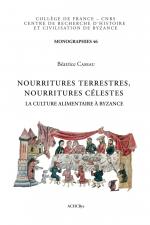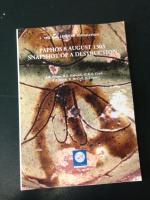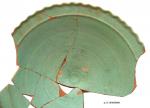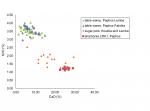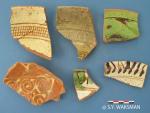... two papers given by POMEDOR member Ilias Anagnostakis at a conference in Potenza (Italy) in the framework of the project "MenSALe".
An assemblage representing post-earthquake clearing was found sealed in a well at Fabrika Hill, Paphos (the Paphos-theatre site), by the excavation team from the University of Sydney.
Most of the assemblages comprised pottery that could be dated to the late 13th–early 14th century, and included a small amount of utility vessels and a large number of glazed wares, predominantly Paphos-Lemba production. Considerable amount of kiln debris identified the site as one of the Paphos-Lemba pottery workshops.
A paper entitled "Long-term pottery production and chemical reference groups: examples from Medieval Western Turkey", mentioning the introduction in the local repertoire of new types, ceramics techniques and fashions with the arrival of the Turkish populations - a question directly related to POMEDOR themes.
Reference:
S.Y. Waksman, Long-term pottery production and chemical reference groups: examples from Medieval Western Turkey, in H. Meyza (ed.), Late Hellenistic to Mediaeval Fine wares of the Aegean Coast of Anatolia. Their production, imitation and use, Varsaw, 107-125 (2014).
This paper is a synthesis of investigations, based on chemical analysis, of various categories of pottery, dated back from the late Roman to the Venetian period. It includes evidences of circulation of cooking wares, which call for a better understanding of the possible influence of these imports on cooking practices.
Reference:
S.Y. Waksman, Archaeometric approaches to ceramics production and imports in Medieval Cyprus, in D. Papanikola-Bakirtzi, N. Coureas (eds.), Cypriot Medieval Ceramics: Reconsiderations and New Perspectives, Nicosie, 257-277 (2014).
The importance of the main "Middle Byzantine Production" (MBP), which includes several 12-13th c. pottery types known as "Fine sgraffito ware", Aegean Ware" etc., is seen both through its large distribution and by its predominance in 12th-13th c. AD shipwrecks. With the help of chemical analysis, we show in this paper that it was manufactured in Chalcis (Greece), the harbour of wealthy Byzantine Thebes, and later on a Venetian hub under the name of Negroponte. These results question the impact of the Frankish conquest on production and diffusion of goods, and raise issues for future research on consumption and food habits.
An article written by Ilias Anagnostakis published in a journal edited by the European Institute for the History and Culture of Food.
Complete reference : Anagnostakis, I., 2013. Noms de vignes et de raisins et techniques de vinification à Byzance. Continuité et rupture avec la viticulture de l’antiquité tardive. Food & History, 11(2): 35-59.
Edited by Ilias Anagnostakis, from the "National Hellenic Research Foundation" in Athens, a member of the POMEDOR network.
orders: orders@armosbooks.gr



